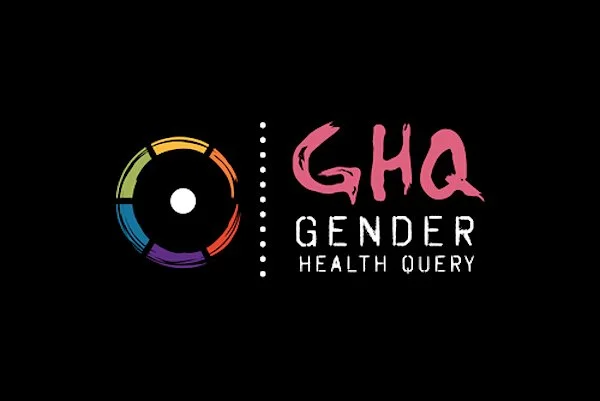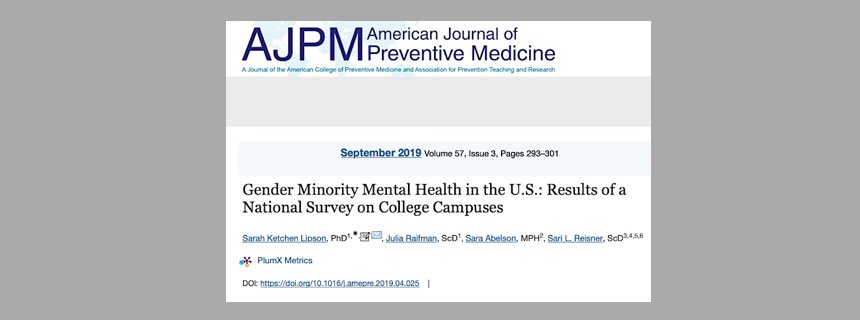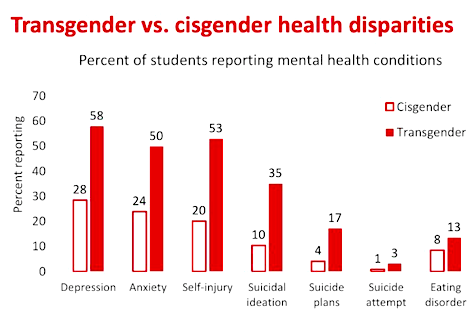Mental Health Problems Are Significantly Higher in Trans-Identified People in a Study of College Students
NEWS
A new study called “Gender Minority Mental Health in the U.S.: Results of a National Survey on College Campuses” reviews data that shows much higher rates of mental health problems in college students with gender dysphoria.
Here is the overall comparison:
Graph circulated by a researcher on SM regarding Lipson (2019)
This chart is broken down by sex and shows FtMs have the most mental health issues of all categories:
Graph circulated by a researcher on SM regarding Lipson (2019)
The story is covered on a Boston University website which described the study this way:
The largest and most comprehensive mental health survey of college students in the US reveals that students who identify as transgender, gender nonconforming, genderqueer, and nonbinary face enormous mental health disparities relative to their peers. In a first-of-its-kind study published on Friday, August 16, in the American Journal of Preventive Medicine, Boston University researchers and collaborators found that gender minority students, whose gender identity differs from the sex assigned them at birth, are between two and four times more likely to experience mental health problems than the rest of their peers.
2.10% of the survey was categorized as “gender minority,” a very high percent of the population based on any research that occurred until recently. But this sample includes “genderqueer” individuals who may not be transitioning medically.
In a trend found elsewhere, more biological females identified as trans/non-binary. They weighted this data so some of the numbers they arrived at appear to be affected by that. From the study itself:
The sample included 65,213 students at 71 colleges and universities across the U.S. Overall, 98% identified as cisgender (n=63,994) and 2% as GM (n=1,237); 1.3% identified as trans masculine and 0.8% as trans feminine. The sample was roughly two-thirds white, and most were undergraduate students. Additional characteristics are presented in Table 1.
More females appear to be attracted to non-binary identities. To understand where this falls in terms of biological sex it is important to note more females attend college than males. In this survey the ratio of females and males who are not trans is 43,388: 20,606 or 43:20, about 2:1. A larger percent of the females were genderqueer-identified.
F=female:
Genderqueer FAB (n=460)
Genderqueer MAB (n=138)
REFERENCES:
Colarossi, J. (2019, August 16). Transgender College Students Are Up to Four Times as Likely to Experience Mental Health Problems. The Brink. Retrieved from https://www.bu.edu/articles/2019/transgender-college-students-mental-health-problems/
Lipson, S.K, Raifman, J., Abelson, S., Reisner, S.L. Gender Minority Mental Health in the U.S.: Results of a National Survey on College Campuses. American Journal of Preventative Medicine 53(3), 293–301. doi.org/10.1016/j.amepre.2019.04.025




